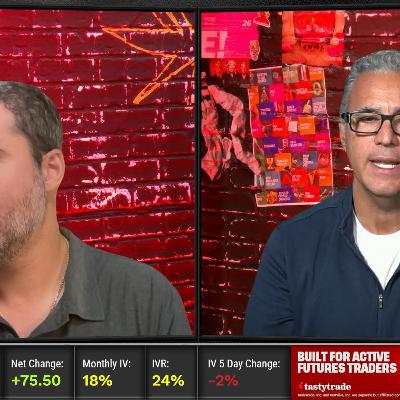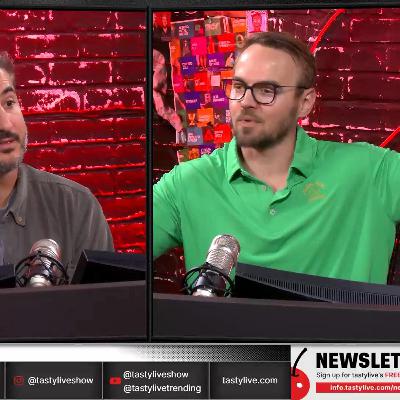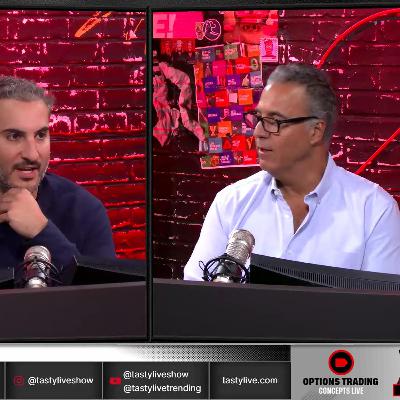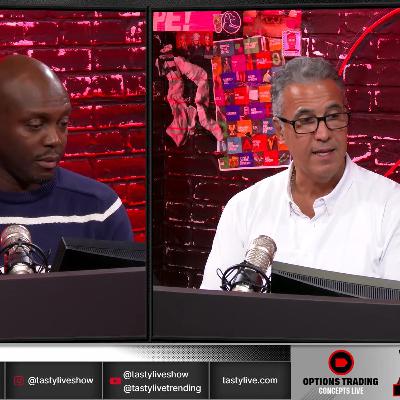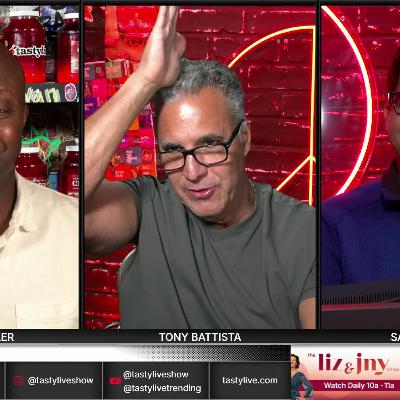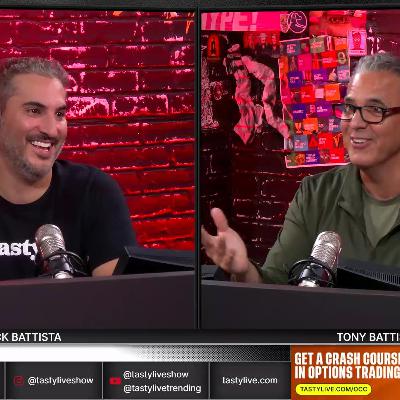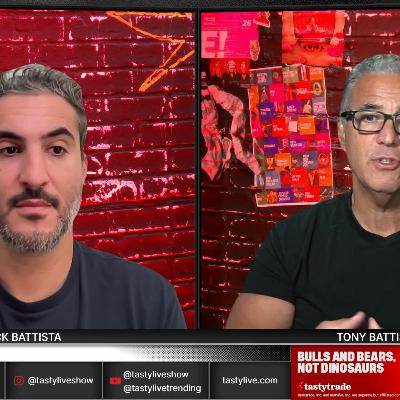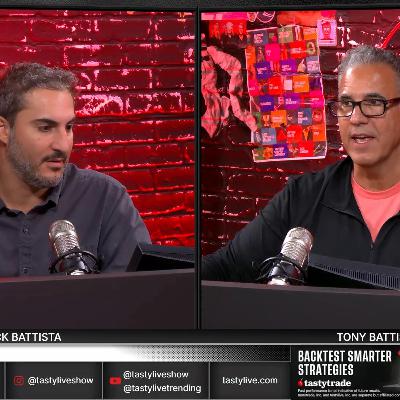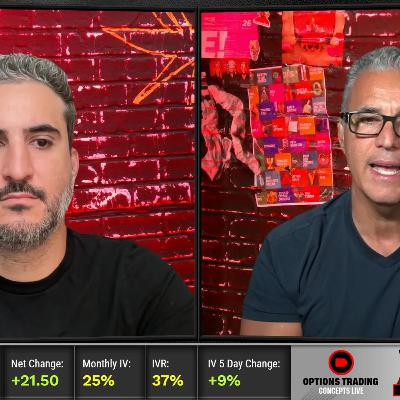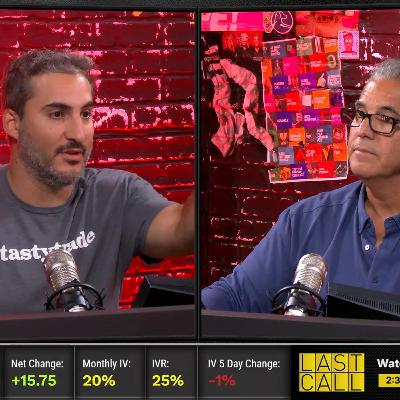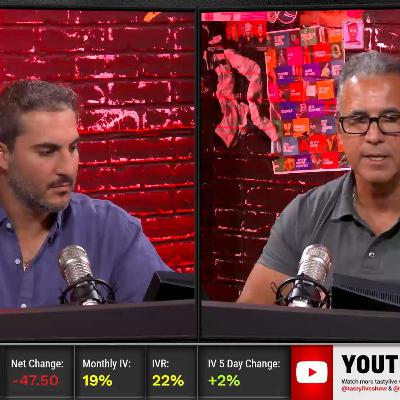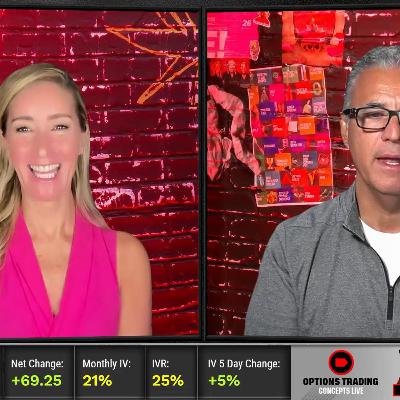Discover tastylive: Market Measures
tastylive: Market Measures

tastylive: Market Measures
Author: tastylive
Subscribed: 35Played: 653Subscribe
Share
© ℗ & © copyright 2013 - 2025 tastylive. All Rights Reserved.
Description
It's not always easy to take the measure of a market, whether you've been trading for a day or a decade. On this segment we look under the hood—options probabilities, volatility, trading strategies, futures, you name it—so your trading mechanics are built to manage more winners.
2259 Episodes
Reverse
Bitcoin shows remarkably weak correlation with traditional markets (0.03 over 10 years, 0.38 over past six months), suggesting significant diversification benefits despite its volatility. While Bitcoin exhibits approximately eight times more volatility than S&P 500 (SPY), with historical daily moves as large as 45% compared to SPY's typical 5% range, adding it strategically to portfolios can be beneficial.
Analysis indicates that allocating 10-30% of a portfolio to Bitcoin relative to SPY position doesn't meaningfully increase overall portfolio volatility due to diversification effects. This makes Bitcoin an attractive diversification tool for passive investors seeking non-correlated assets to enhance risk-adjusted returns.
The cryptocurrency's fat-tailed distribution pattern and independent price movement provide potential upside opportunities while maintaining reasonable portfolio risk levels when properly sized.
The segment explored risk management strategies for bullish traders, comparing naked puts to defined-risk alternatives. While naked puts offer higher potential returns, defined-risk strategies like put spreads significantly reduce buying power requirements and maximum loss exposure.
For smaller accounts, particularly Tastybytes accounts (small acounts like around with $25K), defined-risk strategies show approximately 90% correlation with naked options while requiring substantially less capital. This approach offers traders with limited capital access to higher-priced securities like SPY and Apple (AAPL) with manageable risk profiles.
In this half-hour segment, Sahil, from the Research Team discusses many current market trends and signals, particularly the evolving definitions of low implied volatility. He highlights that despite the S&P 500 reaching all-time highs, a significant number of stocks are underperforming, indicating a top-heavy market. The MAG-7 stocks, especially NVIDIA (NVDA) and Microsoft (MSFT), dominate market contributions, exacerbating this trend. Sahil also examines treasury yields and currency trends, suggesting that despite rising interest rates, market sentiment remains bullish, bolstered by strong earnings and hopes for rate cuts.
Recent data reveals the November to January trading period delivers better returns and higher win rates than the rest of the year, according to a tastylive Market Measure segment focused on "holiday euphoria."
The five-year study of S&P 500 ETF (SPY) examined 16-delta strangles across different volatility environments, finding win rates improved across all scenarios during the holiday window, with particularly strong performance during high implied volatility periods.
Risk metrics showed conditional value at risk decreased approximately 62% during the November-January window compared to non-holiday periods. While these patterns reflect recent market behavior with fewer sell-offs occurring during holiday periods, traders should view this as a probability tilt rather than a guarantee.
The analysis reinforces the importance of trade management, appropriate position sizing, and seeking high implied volatility opportunities regardless of season.
Analysis of SPY options data from 2015-2025 reveals selling 16-delta, 45-day strangles and managing at 21 days consistently outperforms holding 21-day options until expiration. The latter strategy increases tail risk by 34% with only minor profit improvements.
Higher implied volatility environments offer better risk-adjusted returns despite larger drawdowns. While average P&L doubles in high volatility, the conditional value at risk remains proportionally stable.
Holding options near expiration significantly widens P&L distribution. Though extrinsic value declines to zero at expiration (potentially accelerating profits), this period also presents the greatest loss potential.
For ETF short premium strategies, trading longer-duration options and managing early has proven superior over the past decade, creating a tighter, more manageable distribution of returns.
Market volatility has increased significantly in 2025, with daily price movements up 2.4x and percentage changes up 1.5x compared to 2015-2024. This has prompted traders to consider legging in and out of positions to capitalize on market swings.
Our research study analyzed SPY data over 10 years, comparing 45-day strangle strategies managed as whole positions versus managing each leg independently at 50% profit. Results show managing positions as a whole slightly outperformed the legging approach.
When legging out, traders should aim for 75-90% profit on the untested side rather than just 50%, as buying back options with substantial remaining value adds risk to the overall position. The study concludes that while legging can work in certain scenarios, it increases management complexity and directional risk exposure.
A market measure segment explored why volatility behavior doesn't directly correlate with price movement in equity markets. Using five years of S&P 500 (SPY) data, researchers demonstrated that implied volatility acts independently of price direction.
Key findings revealed the strongest correlation exists between volume and IV Rank (IVR) at 0.5, while price and volatility showed minimal connection. The scatter plot visualization confirmed volatility tends to contract fastest when both trading volume and IVR are elevated.
For traders, this means focusing on IV metrics rather than price movement when assessing market stress. Peak fear moments, characterized by surging IVR and volume, typically present optimal opportunities to fade volatility, despite feeling uncomfortable in the moment.
A market measure segment analyzed how volatility and trading volume interact in SPY over a five-year period. The research confirms that when implied volatility (IVR) spikes, trading volume typically increases, signaling genuine fear in markets.
The most significant finding: days with both high IVR and high volume create ideal short-volatility setups, as these conditions typically lead to rapid volatility contraction within 24-48 hours. This pattern creates what traders call "the juiciest short vol opportunities."
The study reinforces that crowd behavior drives the volatility cycle, once everyone reacts to market panic, there's no one left to sell, creating mean reversion. Low IVR periods offer minimal reward for volatility sellers due to limited expected movement.
The market measure segment analyzed stop-loss strategies for spread trades, examining data from SPY options over 10 years. Research showed trades without stop losses had the highest average P&L and win rates compared to various stop-loss thresholds. For traders needing protection, the 50-70% range offered the best balance between risk mitigation and profitability.
Rather than exiting positions completely, selling the untested side during adverse moves can reduce delta exposure by 30-50%, keeping traders in the game while managing risk.
In a data-rich market measure, analysis shows 2025 correlations between major assets are significantly higher than historic lows across the board. SPY and QQQ have reached "maxed out" correlation levels, suggesting unified market movement despite Friday's volatility.
Gold has returned to its classic hedge profile with near-zero or negative correlation to equities, while small caps closely track major indices, indicating broader risk-on participation. Tech sector cohesion remains strong but less extreme than during pandemic peaks in 2020-2022.
The research suggests traders should be mindful of correlations when constructing portfolios, potentially reducing position sizing during periods of unusually high correlation. Metals continue showing strength with silver up nearly 6%, while tech darlings like NVIDIA, Microsoft, and AI-related stocks post significant gains.
Dr. Jim emphasized the importance of assessing leverage differently for short versus long delta positions. For short delta portfolios, he recommends using a delta-theta ratio of approximately 0.5, adjusting theta levels based on market volatility (0.1-0.2% in low volatility, up to 0.5% in high volatility environments).
For long delta positions, he suggests measuring leverage relative to SPY, calculating beta-weighted delta as a multiple of portfolio size. A 1X leverage means portfolio delta exposure equals the notional value of equivalent SPY shares.
Most traders are likely over-leveraged without realizing it. Dr. Jim recommends beginners start with 1X leverage, with experienced traders typically comfortable in the 2-3X range.
Hosts Liz and Tony welcomed researcher Kai to dissect Friday's dramatic sell-off that erased the entire week's gains, with breaking news of OpenAI-Broadcom deal sending AVGO up $40 to $360. Liz admitted eating her words after declaring markets "complacent" at 9:59am just before the crash, noting there was "no buying pressure at all" after 10am. The Friday move sent expected moves surging from 1.1% to 2.5% for the current week (166 points), with IVR jumping across all asset classes - especially gold and Bitcoin which showed double the S&P's volatility expansion. Kai explained crypto's notoriously higher volatility (7% Bitcoin move wasn't even top 10 percentile historically) while noting the 18% intraday plunge wiped out heavily leveraged accounts. Liz finally celebrated her gold bullishness after 22 years of ridicule as the metal broke $4,000, while the upcoming week features major bank earnings starting Tuesday morning (JPM, GS, C, WF) and TSM Wednesday, with expiration week historically showing 16-up/11-down pattern favoring bulls into Friday.


